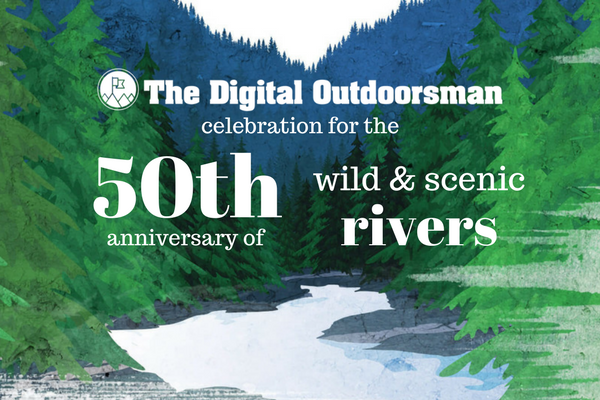Update on Social Media Strategy for Brand Marketing with Casey LeBrun

Wow, what was once just a possibility is reality in social media marketing. It is amazing how fast the landscape is changing. We are here with Casey LeBrun, Conversion Engineer at Revenue River to get another update on what you should be looking at to prioritize not only today, but tomorrow (check out the Fundamentals of Digital Marketing for the Outdoor Industry).
The social media and marketing trends that once seemed like science fiction are quickly becoming a reality for marketers everywhere. Now, it’s just a matter of identifying which channels and trends to embrace in your overall marketing strategy that will have the greatest impactQ- Casey what are you seeing happening with the trends predicted for 2017?
A- Platform consolidation continues to rapidly progress----
We continue to see new products launch on one platform, which once they begin to become used are then reproduced or blended into an existing large platform. For example, Snapchat launched Memories, for raw in-the-heat-of-the moment content and shortly thereafter, Instagram launched Stories. The big platforms continue to look to grab share and make your decisions harder on where to place your emphasis for social media efforts. Just recently, LinkedIn announced a “live video” feature similar to Facebooks.
I am continuing to see huge growth in platforms allowing users to:
- Create and share video content
- Create and share live video content
- Discover news and what’s going on around them (based on location)
Q- What are the top changes outdoor industry brand marketers need to be implementing now and for 2018?
A- I see five trends that the outdoor industry brand marketers should be aware of today and for 2018. They are:
- Video, video and more quality video
- Instagram is really a top platform for outdoor brands so get more out of it
- LinkedIn is a gem waiting for outdoor industry brands to engage in building B2C sales
- Marketing bots will become a key part of social media marketing
- You have to get better at distributing your quality content
Take each one of these areas and tell us a little more.
A- Video----
1. The bar is continuing to rise rapidly on content quality. The only way you are going to stand out is to invest in creating higher quality content than your competitors.
2. The movement to “video” being the primary content medium people want to use to consume information is accelerating even faster than predicted two years ago. according to news shared by HubSpot:
· Video is projected to claim more than 80% of all web traffic by 2019.
· 82% of Twitter users watch video content on Twitter
· YouTube has over a billion users, almost one-third of total internet users.
· 45% of people watch more than an hour of Facebook or YouTube videos a week.
· More than 500 million hours of videos are watched on YouTube each day.
· More video content is uploaded in 30 days than the major U.S. television networks have created in 30 years.
· 87% of online marketers use video content.
A- Instagram----
Photos/Videos:
Product photos: If you sell physical products such as fashion or food, you can post high-resolution photos of your product in various settings. Califia Farms (@califiafarms) does a great job with this. (See more examples here from the best brands on Instagram, according to HubSpot.)
Behind-the-scenes: Another popular type of Instagram photos from brands are behind-the-scenes photos. These could be photos of people in the company, events, or the making of a product (e.g. how a dish is prepared).
User-generated content: If you can’t get suitable product photos or enough behind-the-scenes photos like us (a remote company that creates software), you could post user-generated content. User-generated content grew our Instagram account by over 500 percent in a year.
Quotes Over Photos:
Use quotes laid over your great product or product use photos. Motivational and inspirational quotes are one of the most popular content types on Instagram (with more than 42 million posts tagged with #quotes at the time of writing). You can create these simply enough by using free design tools like Canva and Adobe Spark.
Stories:
The Stories tool is a huge unused tool by most outdoor brand companies. There are many different ways of using Instagram Stories for your marketing. Here are a few examples:
· Storytelling
· Share how-to tutorials
· Promote a blog post
· Share a list
· Announce limited time offers and promotions
· Offer giveaways and discount coupons
· Share data, research, and statistics
· Share quotes and inspiration
· Introduce an Instagram takeover guest
· Share announcements, news, and updates
A- LinkedIn (LI)----
LinkedIn is probably the single most underutilized channel for outdoor brands who want to create more direct-to-consumer sales. Outdoor brand marketing and sales leaders need to really appreciate:
- LinkedIn members are loyal brand advocates, willing to pay more for a brand they relate to. 86 percent said, “When I find a brand I like, I stick to it.”
- According to comScore’s 2013 Buying Power Index, LinkedIn members have nearly 2x more buying power than Facebook.
- Members are more than 2x more likely to trust information provided on LinkedIn than other social networks, which drives purchases.
- Behind every business is a collection of consumers that have a favorite outdoor interest and brands
- LinkedIn members are 93% more likely to have a college degree than the average online adult, fitting part of the 20% high spend consumers in outdoor gear
With LI’s new video platform, you can do so much to position your brand and your products with individuals who have the money, desire, and interest.
A- Snapchat----
- Snapchat has rolled new audience-based targeting capabilities for its filter ad campaign offerings.
- Filters are graphical overlays that users place on their snaps.
- Brands can advertise their products on filters by running sponsored filter campaigns.
- Filters offer brands great exposure to Snapchat users, as three billion filters are viewed per day according to Snap.
A- Marketing Bots----
As a marketer, the thought of bots can be a bit intimidating on both the job perspective and implementation side. But there are tons of positives that come with automation. Eventually, sure, bots will be able to do a variety of tasks that humans currently do like write blog posts, create graphics, deliver tailored content to users, send emails, schedule social media posts, and respond to user questions.
But just like the computer automated handwriting and Netflix automated the movie industry, we will adapt and evolve into the next stage of social media, technology, and marketing, just like we’ve done throughout history.
For now, you’ll be well ahead of the game by experimenting with basic bot functions like communicating with website visitors, implementing a Facebook messenger, or Slack bot, or conducting research – just to help you get a feel for what they can do.
A- Distributing Your Content Better----
For example, if you’ve worked hard to create a quality 4,000-word blog post, that blog post deserves a little extra love when it comes to promotion. You might create an infographic, a podcast episode, a short video, send it to all of your newsletters subscribers, pitch it to major publications, post it to various communities, and lots more.
As with so many business courses, we come to the 80/20 rule. You should spend 20% of your time creating QUALITY content and 80% making sure it is distributed across channels in a manner that maximizes its value. With so much content being published every day online, it’s no longer enough to simply post and hope for the best. More effort is required than ever before.


